Investigating the Investments Required to Transition New Zealand’s Heavy-Duty Vehicles to Hydrogen
Abstract
:1. Introduction
- Green hydrogen: Produced using electrolysers powered by renewable electricity;
- Blue hydrogen: Produced using fossil fuels along with CCS technology;
- Turquoise hydrogen: Produced using pyrolysis, which yields solid carbon instead of CO2; and
- Purple, pink, or yellow hydrogen (no consensus): Produced using heat and electricity from nuclear reactors.
2. Literature Review
- Public policies: policies that support and enable the transition are essential;
- High-level complexity and uncertainty: sustainability transitions are “wicked problems”. This complexity is irreducible;
- Transitions are value-laden: therefore, targets are subjective;
- Transitions are highly contested: There is no clear way forward that suits all parties; and
- Context dependency: Variations can be expected. A one-size-fits-all approach is not appropriate.
3. Methodology
- Problem identification—The modelling approach facilitates the process of discerning which aspects of the system are significant, and which are not;
- Ease of creation—The analyst can complete the modelling process within the allotted time;
- Non-linearity—The modelling approach accommodates non-linear responses and relationships between interconnected entities;
- Dynamic behaviour and interactions—The modelling approach appropriately represents interconnectivity and consumer behaviour; and
- Temporal consideration—The modelling approach provides the ability to model scenarios over a time period consisting of sufficient duration and resolution.
4. Model
4.1. Scenario 1: No Hydrogen (Only Diesel)
4.2. Scenario 2: Low Hydrogen
4.3. Scenario 3: Average Hydrogen
4.4. Scenario 4: High Hydrogen
4.5. Scenario 5: No Diesel (Only Hydrogen)
4.6. Assumptions
- It is assumed that cost reductions resulting from learning curves are driven by cumulative production quantities as per Wright’s law of technological progress [23]. This implies that technology learning curves operate at a global scale and that New Zealand is not able to significantly influence these learning curves by itself as international investments (and therefore production quantities) in hydrogen technologies are expected to be orders of magnitude larger than the investments made by New Zealand [60];
- Similar to the above, it is assumed that the standardization and regulation necessary for hydrogen technologies to flourish will be developed internationally. This would mean that New Zealand would be responsible only for adapting international progress into a local context. The costs to New Zealand of implementing the necessary standardization and regulation are therefore deemed to be insignificant;
- The assumption is made that the New Zealand government would support the hydrogen transition by putting the necessary standardization and regulation in place once market signals indicate that it is necessary to do so. This assumption is supported by the active interest and support that the government has shown in hydrogen transitions to date [19];
- It is assumed that the planned hydrogen refuelling network announced by Hiringa Energy will be carried out as planned [21];
- The model works on the assumption that all green hydrogen generation is met with polymer electrolyte membrane (PEM) electrolysers, and that these electrolysers are located on-site at refuelling stations, i.e., in a distributed (not centralized) manner;
- As most low carbon futures are built around electricity, it is assumed that any necessary upgrades or improvements to the New Zealand electricity grid would be required regardless of the exact technology used. Therefore, the cost of such improvements is not assigned to enabling hydrogen specifically and is not considered in this model;
- The contracted price of electricity is assumed to remain roughly within historic ranges as it is assumed that an increase in demand would result in the commissioning of additional power plants that would balance out the supply demand ratio with mature renewable electricity technologies that are expected to provide electricity at progressively lower costs [61]. Additionally, the model assumes that all electricity for hydrogen generation will be sourced on the margin of existing electricity production capacity and that there is an infinite amount of marginal electricity available from existing sources. The cost of marginal electricity is derived from the work of John Culy Consulting [62];
- It is assumed that hydrogen fuel cell trucks have a comparable payload to diesel trucks [63]. It is also assumed that the lifetime of fuel cell trucks is similar to diesel trucks and that the number of trucks required on the road increase roughly according to the growth in GDP. Such growth is contentious as it is expected that at some point a portion of freight will move to rail. Additionally, the model does not account for autonomous driving or similar changes to the basic structure of how the heavy-duty vehicle sector is currently operating;
- It is assumed that electrolysers and fuel cell trucks will be readily available on the market;
- Only hydrogen fuel cell trucks are considered as a decarbonisation option. Biodiesel, battery-electric, and other decarbonisation alternatives do not compete with hydrogen in this model; and
- The model targets a 20% surplus of hydrogen to prevent hydrogen stockouts. This is in line with current practices surrounding diesel, and it is assumed that these practices will extend to hydrogen [64].
4.7. Limitations
- The forecasting function used in the model is the standard “FORECAST” function offered by the software package used (Vensim). As noted in the software documentation, this is a trend extrapolation function, which “performs very badly at turnarounds” [66]. As such the model is susceptible to bad forecasts, which can result in significant under- or over-investments in hydrogen production capacity. In practice, an entity such as Hiringa Energy [67] would monitor the supply and demand of hydrogen closely. For the sake of this model, it is assumed that a supply shortfall (if it occurs) is either met by steam methane reformation technology or results in lost sales, and that an excess of supply is absorbed over time. The potential overinvestment should be considered when analysing the model’s financial outputs;
- The method that was used for carrying out a sensitivity analysis, and the limitations of this method, are described in detail in Eker et al. [53]. The most notable limitations of this method include its lack of analysis at the model start and finish times, and the potential that the resulting lookup functions will be non-monotonic;
- The market’s response to the cost and availability of hydrogen is defined by lookup functions. These lookup functions are synthesized from qualitative and quantitative data, and thus are subjective. Every effort was made to make these lookup tables as sensible and accurate as possible, but in some instances the lookup functions cause sharp changes in model behaviour. Detailed descriptions of how the lookup tables were generated can be found in Kotze [43].
- Data were collected from Nikola Motors [68]. The company has since fallen into disrepute, and there are claims that they overstated the maturity and competitiveness of their technologies [69]. As the model does not make exclusive or extensive use of the data collected from Nikola Motors, it is expected that the model would not be significantly compromised even if Nikola’s data are incorrect;
- The nature of hydrogen technologies—and a hydrogen economy—is that there are significant and compounding benefits to be realized as hydrogen becomes more prevalent. Various sectors of the economy lend themselves to hydrogen, but only HDVs are investigated in this study. It is generally expected that if multiple sectors transition to hydrogen there will be overlapping benefits between the sectors [13]. Any such benefits are not considered in this model, as the HDV sector is modelled in isolation;
- First order differential equations are used to model the decommissioning of trucks and hydrogen production capacity. This is standard practice in system dynamics modelling. Although this method works well in many cases it does have certain limitations. Of consequence to this model is the possibility that diesel trucks remain operational for too long, and thereby prevent the purchase of the fuel cell trucks that would replace them. For more on this see Mathematics behind System Dynamics by Choopojcharoen and Magzari [70]; and
- Only carbon dioxide emissions are considered for diesel trucks. This is because other emissions account for less than 1% of total emissions according to Collier et al. [71].
5. Discussion of Results
5.1. Market Preference for Fuel Cell Trucks
5.2. Fleet Composition
5.3. Investments in Hydrogen Production Capacity
5.4. Investments in Marginal Electricity
6. Conclusions
6.1. Recommendations and Insights for Policy Makers
6.2. Opportunities for Future Research and Modelling
Supplementary Materials
Author Contributions
Funding
Institutional Review Board Statement
Informed Consent Statement
Conflicts of Interest
References
- Steffen, W.; Richardson, K.; Rockström, J.; Cornell, S.E.; Fetzer, I.; Bennett, E.M.; Biggs, R.; Carpenter, S.R.; De Vries, W.; De Wit, C.A.; et al. Planetary boundaries: Guiding human development on a changing planet. Science 2015, 347, 736–748. [Google Scholar] [CrossRef] [PubMed] [Green Version]
- Swilling, M. Economic crisis, long waves and the sustainability transition: An African perspective. Environ. Innov. Soc. Transit. 2013, 6, 96–115. [Google Scholar] [CrossRef]
- Cook, J.; Oreskes, N.; Doran, P.T.; Anderegg, W.R.L.; Verheggen, B.; Maibach, E.W.; Carlton, J.S.; Lewandowsky, S.; Skuce, A.G.; Green, S.A.; et al. Consensus on consensus: A synthesis of consensus estimates on human-caused global warming. Environ. Res. Lett. 2016, 11. [Google Scholar] [CrossRef]
- NASA Scientific Consensus: Earth’s Climate Is Warming. Available online: https://climate.nasa.gov/scientific-consensus/ (accessed on 4 March 2021).
- NOAA Trends in Atmospheric Carbon Dioxide. Available online: https://www.esrl.noaa.gov/gmd/ccgg/trends/gl_data.html (accessed on 4 March 2021).
- Bereiter, B.; Eggleston, S.; Schmitt, J.; Nehrbass-Ahles, C.; Stocker, T.F.; Fischer, H.; Kipfstuhl, S.; Chappellaz, J. Revision of the EPICA Dome C CO2 record from 800 to 600-kyr before present. Geophys. Res. Lett. 2015, 42, 542–549. [Google Scholar] [CrossRef]
- Fawzy, S.; Osman, A.I.; Doran, J.; Rooney, D.W. Strategies for mitigation of climate change: A review. Environ. Chem. Lett. 2020, 18, 2069–2094. [Google Scholar] [CrossRef]
- Ciais, P.; Sabine, C.; Bala, G.; Bopp, L.; Brovkin, V.; Canadell, J.; Chhabra, A.; DeFries, R.; Galloway, J.; Heimann, M.; et al. The physical science basis. Contribution of working group I to the fifth assessment report of the intergovernmental panel on climate change. Chang. IPCC Clim. 2013, 465–570. [Google Scholar] [CrossRef] [Green Version]
- Lawrence, M.G.; Schäfer, S.; Muri, H.; Scott, V.; Oschlies, A.; Vaughan, N.E.; Boucher, O.; Schmidt, H.; Haywood, J.; Scheffran, J. Evaluating climate geoengineering proposals in the context of the Paris Agreement temperature goals. Nat. Commun. 2018, 9. [Google Scholar] [CrossRef] [Green Version]
- U.S. Department of Energy. Hydrogen Strategy: Enabling a Low-Carbon Economy. 2020. Available online: https://www.energy.gov/sites/prod/files/2020/07/f76/USDOE_FE_Hydrogen_Strategy_July2020.pdf (accessed on 4 March 2020).
- Carbon Brief In-Depth Q&A: Does the World Need Hydrogen to Solve Climate Change? Available online: https://www.carbonbrief.org/in-depth-qa-does-the-world-need-hydrogen-to-solve-climate-change (accessed on 4 March 2020).
- Osman, A.I.; Deka, T.J.; Baruah, D.C.; Rooney, D.W. Critical challenges in biohydrogen production processes from the organic feedstocks. Biomass Convers. Biorefinery 2020. [Google Scholar] [CrossRef]
- Hydrogen Council. Path to Hydrogen Competitiveness: A Cost Perspective. 2020. Available online: https://hydrogencouncil.com/wp-content/uploads/2020/01/Path-to-Hydrogen-Competitiveness_Full-Study-1.pdf (accessed on 20 September 2020).
- Hydrogen Council. Hydrogen Insights. 2021. Available online: https://hydrogencouncil.com/wp-content/uploads/2021/02/Hydrogen-Insights-2021.pdf (accessed on 4 March 2020).
- MFE Climate Change Response (Zero Carbon) Amendment Act. Available online: https://www.mfe.govt.nz/climate-change/zero-carbon-amendment-act (accessed on 22 September 2020).
- Ministry of Business, Innovation and Employment. Discussion Document: Accelerating Renewable Energy and Energy Efficiency. 2019. Available online: https://www.mbie.govt.nz/assets/discussion-document-accelerating-renewable-energy-and-energy-efficiency.pdf (accessed on 22 September 2020).
- Ministry of Business, Innovation and Employment. Memorandum of Cooperatoin between the Ministry of Economy, Trade and Industry of Japan and the Ministry of Business, Innovation and Employment of New Zealand on Hydrogen. 2018. Available online: https://www.meti.go.jp/english/press/2018/1023_006.html (accessed on 22 September 2020).
- WEC. New Zealand: A Key Player for the Hydrogen Transition. 2013. Available online: https://www.bec.org.nz/__data/assets/pdf_file/0004/188203/BEC_New-Zealands-Hydrogen-Potential_Debrief.pdf (accessed on 20 September 2020).
- Ministry of Business, Innovation and Employment. A Vision for Hydrogen in New Zealand. 2019. Available online: https://www.mbie.govt.nz/dmsdocument/6798-a-vision-for-hydrogen-in-new-zealand-green-paper (accessed on 22 September 2020).
- Venture Taranaki. H2 Taranaki Roadmap. 2019. Available online: https://about.taranaki.info/Taranaki2050/Work-Group-Files/H2-Taranaki-Roadmap.pdf (accessed on 20 September 2020).
- Hiringa Energy. Hiringa Energy and HYZON Motors to Deploy Fuel Cell-Powered Heavy Trucks in New Zealand in 2021. Available online: https://www.hiringa.co.nz/post/hiringa-energy-and-hyzon-motors-to-deploy-fuel-cell-powered-heavy-trucks-in-new-zealand-in-2021 (accessed on 29 September 2020).
- World Energy Council. International Hydrogen Strategies. 2020. Available online: https://www.researchgate.net/publication/345162082_INTERNATIONAL_HYDROGEN_STRATEGIES_A_study_commissioned_by_and_in_cooperation_withthe_World_Energy_Council_Germany (accessed on 29 September 2020).
- Nagy, B.; Farmer, J.D.; Bui, Q.M.; Trancik, J.E. Statistical Basis for Predicting Technological Progress. PLoS ONE 2013, 8, 52669. [Google Scholar] [CrossRef] [PubMed] [Green Version]
- Ark Invest Moore’s Law Isn’t Dead: It’s Wrong—Long Live Wright’s Law. Available online: https://ark-invest.com/articles/analyst-research/wrights-law-2/ (accessed on 20 February 2020).
- KPMG. Global Automotive Executive Survey. 2019. Available online: https://automotive-institute.kpmg.de/GAES2019/downloads/GAES2019PressConferenceENG_FINAL.PDF (accessed on 20 September 2020).
- Deloitte; Ballard. Fueling the Future of Mobility Hydrogen and Fuel Cell Solutions for Transportation. 2020. Available online: https://www2.deloitte.com/content/dam/Deloitte/cn/Documents/finance/deloitte-cn-fueling-the-future-of-mobility-en-200101.pdf (accessed on 20 September 2020).
- Brown, T. ThyssenKrupp’s “Green Hydrogen and Renewable Ammonia Value Chain”. Available online: https://ammoniaindustry.com/thyssenkrupps-green-hydrogen-and-renewable-ammonia-value-chain/ (accessed on 22 September 2020).
- Energy Transition Commission. Reaching Net-Zero Carbon Emissions from Harder-to-Abate Sectors by Mid-Century. 2018. Available online: https://www.ieta.org/resources/COP24/MiscMediaFiles/Dec7/SE16(3).pdf (accessed on 20 September 2020).
- Cronin, P.; Ryan, F.; Coughlan, M. Undertaking a literature review: A step-by-step approach. Br. J. Nurs. 2008, 17, 38–43. [Google Scholar] [CrossRef]
- Bettany-Saltikov, J. How to Do a Systematic Literature Review in Nursing: A Step-by-Step Guide; McGraw-Hill Education: London, UK, 2012; ISBN 978-0335242276. [Google Scholar]
- European Environment Agency. Perspectives on Transitions to Sustainability. 2018. Available online: https://www.eea.europa.eu/publications/perspectives-on-transitions-to-sustainability (accessed on 20 September 2020).
- Markard, J.; Raven, R.; Truffer, B. Sustainability transitions: An emerging field of research and its prospects. Res. Policy 2012, 41, 955–967. [Google Scholar] [CrossRef]
- Turnheim, B.; Asquith, M.; Geels, F.W. Making sustainability transitions research policy-relevant: Challenges at the science-policy interface. Environ. Innov. Soc. Transit. 2020, 34, 116–120. [Google Scholar] [CrossRef]
- Geels, F.W. Socio-Technical Transitions to Sustainability: A Review of Criticisms and Elaborations of the Multi-Level Perspective. 2018. Available online: https://www.research.manchester.ac.uk/portal/files/123070758/Geels_COSUST_paper_AUTHOR_ACCEPTED_MANUSCRIPT.docx (accessed on 5 March 2021).
- Markard, J. The next phase of the energy transition and its implications for research and policy. Nat. Energy 2018, 3, 628–633. [Google Scholar] [CrossRef]
- Markard, J.; Truffer, B. Technological innovation systems and the multi-level perspective: Towards an integrated framework. Res. Policy 2008, 37, 596–615. [Google Scholar] [CrossRef]
- European Environment Agency. Sustainability Transitions: Policy and Practice. 2019. Available online: https://www.eea.europa.eu/publications/sustainability-transitions-policy-and-practice (accessed on 20 September 2020).
- European Environment Agency. Transforming the EU Power Sector: Avoiding a Carbon Lock-In. 2016. Available online: https://www.eea.europa.eu/publications/transforming-the-eu-power-sector (accessed on 20 September 2020).
- IEA. The Future of Hydrogen: Seizing Today’s Opportunities. 2019. Available online: https://www.iea.org/reports/the-future-of-hydrogen (accessed on 20 September 2020).
- Leaver, J.; Gillingham, K.; Baglino, A. System Dynamics Modelling of Pathways to a Hydrogen Economy in New Zealand: Final Report; ePress Unitec: Auckland, New Zealand, 2012. [Google Scholar]
- Concept Consulting. Hydrogen in New Zealand Report 1—Summary. 2019. Available online: https://www.concept.co.nz/uploads/1/2/8/3/128396759/h2_report1_summary_v4.pdf (accessed on 20 September 2020).
- International Renewable Energy Agency. Global Renewables Outlook. 2020. Available online: https://irena.org/publications/2020/Apr/Global-Renewables-Outlook-2020 (accessed on 20 September 2020).
- Kotze, R.M. An Investigation Into the Required Investment to Transition the Heavy-Duty Vehicle Sector of New Zealand to Hydrogen. Master’s Thesis, Department of Industrial Engineering, Stellenbosch University, Stellenbosch, South Africa, 2021. [Google Scholar]
- Haro, F. Is System Dynamics Dead or Alive?—Noorjax Consulting. Available online: https://noorjax.com/2020/05/17/is-system-dynamics-dead-or-alive/ (accessed on 22 September 2020).
- Quarton, C.J.; Tlili, O.; Welder, L.; Mansilla, C.; Blanco, H.; Heinrichs, H.; Leaver, J.; Samsatli, N.J.; Lucchese, P.; Robinius, M.; et al. The curious case of the conflicting roles of hydrogen in global energy scenarios. Sustain. Energy Fuels 2020, 4, 80–95. [Google Scholar] [CrossRef] [Green Version]
- Maani, K.; Cavana, R. Systems Thinking, System Dynamics: Managing Change and Complexity; Pretice Hall: Upper Saddle River, NJ, USA, 2007. [Google Scholar]
- Sterman, J.D. Business Dynamics: Systems Thinking and Modeling for a Complex World; McGraw-Hill Education: New York, NY, USA, 2000; ISBN 007238915X. [Google Scholar]
- Forrester, J.W.; Albin, S. Building a System Dynamics Model—Part 1: Conceptualization; Massachusetts Institute of Technology: Cambridge, MA, USA, 1997. [Google Scholar]
- Sterman, J.D. System Dynamics: Systems Thinking and Modeling for a Complex World. MIT Sloan Sch. Manag. 2002, 147, 248–249. [Google Scholar] [CrossRef]
- Maidstone, R. Discrete Event Simulation, System Dynamics and Agent Based Simulation: Discussion and Comparison. System 2012, 1, 1–6. [Google Scholar]
- Barlas, Y. Formal aspects of model validity and validation in system dynamics. Syst. Dyn. Rev. 1996, 12, 183–210. [Google Scholar] [CrossRef]
- Lai, D.; Wahba, R. System Dynamics Model Correctness Checklist; MIT: Cambridge, MA, USA, 2003; Available online: https://ocw.mit.edu/courses/sloan-school-of-management/15-988-system-dynamics-self-study-fall-1998-spring-1999/readings/checklist.pdf (accessed on 13 March 2021).
- Eker, S.; Slinger, J.; Daalen, V.; Yücel, G. Sensitivity analysis of graphical functions. Syst. Dyn. Rev. 2014, 30, 186–205. [Google Scholar] [CrossRef]
- Hearne, J.W. Sensitivity Analysis to Model Functions. Nat. Resour. Model. 2010, 23, 107–120. [Google Scholar] [CrossRef]
- State of California Governor. Newsom Announces California Will Phase Out Gasoline-Powered Cars & Drastically Reduce Demand for Fossil Fuel in California’s Fight against Climate Change|California Governor. Available online: https://www.gov.ca.gov/2020/09/23/governor-newsom-announces-california-will-phase-out-gasoline-powered-cars-drastically-reduce-demand-for-fossil-fuel-in-californias-fight-against-climate-change/ (accessed on 13 November 2020).
- Fuel Cell and Hydrogen Energy Association. Road Map to a US Hydrogen Economy. 2020. Available online: http://www.fchea.org/us-hydrogen-study (accessed on 20 September 2020).
- Interim Climate Change Committee. Accelerated Electrification Evidence, Analysis and Recommendations. 2019. Available online: https://www.iccc.mfe.govt.nz/what-we-do/energy/electricity-inquiry-final-report/accelerated-electrification-evidence-analysis-and-recommendations/ (accessed on 20 September 2020).
- Intergovernmental Panel on Climate Change. Global Warming of 1.5 °C. 2018. Available online: https://report.ipcc.ch/sr15/pdf/sr15_spm_final.pdf%0Ahttp://www.ipcc.ch/report/sr15/ (accessed on 20 September 2020).
- Concept Consulting. Hydrogen in New Zealand Report 2—Analysis. 2019. Available online: https://www.concept.co.nz/uploads/1/2/8/3/128396759/h2_report2_analysis_v4.pdf (accessed on 20 September 2020).
- European Commission. A Hydrogen Strategy for a Climate-Neutral Europe. 2020. Available online: https://ec.europa.eu/energy/sites/ener/files/hydrogen_strategy.pdf (accessed on 20 September 2020).
- EMI Wholesale Price Trends. Available online: https://www.emi.ea.govt.nz/Wholesale/Reports/W_P_C?DateFrom=20150901&DateTo=20200831&RegionType=NZ&_rsdr=L60M&_si=v%7C3 (accessed on 29 September 2020).
- John Culy Consulting. ICC Modelling: Estimated System Incremental and Marginal Cost in 2035. 2019. Available online: https://www.iccc.mfe.govt.nz/assets/PDF_Library/109233134e/FINAL-Culy-ICCC-modelling-Estimated-system-incremental-and-marginal-costs.pdf (accessed on 20 September 2020).
- Hyundai Xcient|HYUNDAI Truck & Bus. Available online: http://trucknbus.hyundai.com/global/en/products/truck/xcient (accessed on 14 October 2020).
- IEA. Energy Supply Security—Emergency Response of IEA Countries. 2014. Available online: https://www.energy.gov/sites/prod/files/2018/08/f54/IEAEmergencyResponseofIEACountries_2014.pdf (accessed on 20 September 2020).
- Sterman, J.D. A Skeptic’s guide to computer models. In Managing a Nation: The Microcomputer Software Catalog; Westview Press: Boulder, CO, USA, 1991; Volume 2, pp. 209–229. [Google Scholar] [CrossRef]
- Vensim Reference Manual—Forecast Function. Available online: https://www.vensim.com/documentation/fn_forecast.htm (accessed on 14 October 2020).
- Hiringa Energy. Green Hydrogen New Zealand. Available online: https://www.greenhydrogennz.com/ (accessed on 22 September 2020).
- Nikola Corporation. Investing in a Cleaner Future. 2020. Available online: https://nikolamotor.com/NikolaInvestorPresentation3-3-2020.pdf (accessed on 20 September 2020).
- Hindenburg Research Nikola: How to Parlay an Ocean of Lies into a Partnership with the Largest Auto OEM in America. Available online: https://hindenburgresearch.com/nikola/ (accessed on 14 October 2020).
- Choopojcharoen, T.; Magzari, A. Mathematics behind System Dynamics. 2012. Available online: https://web.wpi.edu/Pubs/E-project/Available/E-project-052812-144829/unrestricted/MathematicsBehindSystemDynamics.pdf (accessed on 12 October 2020).
- Collier, S.; Ruehl, C.; Yoon, S.; Boriboonsomsin, K.; Durbin, T.D.; Scora, G.; Johnson, K.; Herner, J. Impact of Heavy-Duty Diesel Truck Activity on Fuel Consumption and Its Implication for the Reduction of Greenhouse Gas Emissions. Transp. Res. Rec. 2019, 2673, 125–135. [Google Scholar] [CrossRef]
- Hall, D.; Lutsey, N. Estimating the Infrastructure Needs and Costs for the Launch of Zero-Emission Trucks. 2019. Available online: https://theicct.org/sites/default/files/publications/ICCT_EV_HDVs_Infrastructure_20190809.pdf (accessed on 20 September 2020).
- Energy Transition Commission. Making Mission Possible Delivering a Net-Zero Economy. 2020. Available online: https://www.energy-transitions.org/publications/making-mission-possible/#:~:text=In%20its%20new%20report%20Making,fuels%20combined%20with%20carbon%20capture (accessed on 10 October 2020).
- Cummins Inc. Cummins Closes on its Acquisition of Hydrogenics. Available online: https://www.cummins.com/news/releases/2019/09/09/cummins-closes-its-acquisition-hydrogenics (accessed on 14 November 2020).
- Hirsch, J. Paccar CEO Feight Details Electric, Hydrogen Truck Strategy. Available online: https://www.trucks.com/2020/07/27/paccar-outlines-electric-hydrogen-truck-strategy/ (accessed on 14 November 2020).
- World Energy Council. New Hydrogen Economy: Hope or Hype? 2019. Available online: https://www.worldenergy.org/assets/downloads/WEInsights-Brief-New-Hydrogen-economy-Hype-or-Hope-ExecSum.pdf (accessed on 20 September 2020).
- DOE Energy Department Request for Information in Support of Medium- and Heavy-Duty Truck Research and Development. Available online: https://content.govdelivery.com/accounts/USEERE/bulletins/2a576db (accessed on 21 October 2020).
- Ministry of Transport. New Zealand Vehicle Fleet Annual Statistics. 2018. Available online: https://www.transport.govt.nz/mot-resources/vehicle-fleet-statistics/ (accessed on 21 October 2020).
- Perez, R.J.E. Analysis of the Levelized Cost of Green Hydrogen Production for Very Heavy Vehicles in New Zealand. Master’s Thesis, Department of Electronics and Computer Systems, Victoria University of Wellington, Wellington, New Zealand, 2020. [Google Scholar]
- Perez, R.J.E.; Brent, A.C.; Hinkley, J. Analysis of green hydrogen transportation fuel from renewable energy in New Zealand. In Proceedings of the 7th Asia-Oceania Conference of the International Association for Energy Economics (IAEE), Auckland, New Zealand, 12–15 February 2020; pp. 12–15. [Google Scholar]
- Ministry of Transport. Vehicles Exempt from Paying Road User Charges. Available online: https://www.transport.govt.nz/land/road-user-charges-ruc-and-petrol-excise-duty-ped/roaduserchargeslegislationchanges/vehiclesexemptfrompayingrucqandas/ (accessed on 21 October 2020).
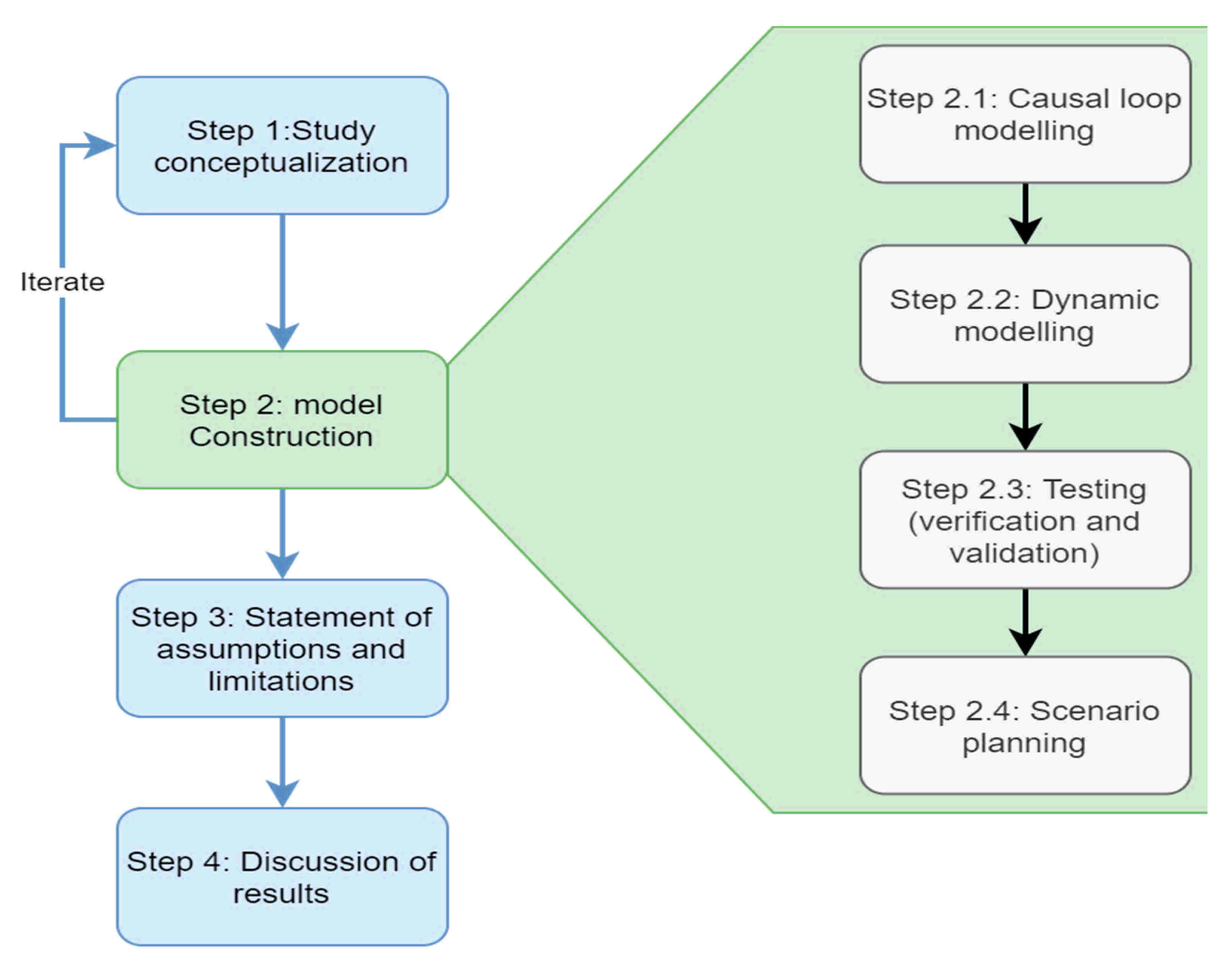
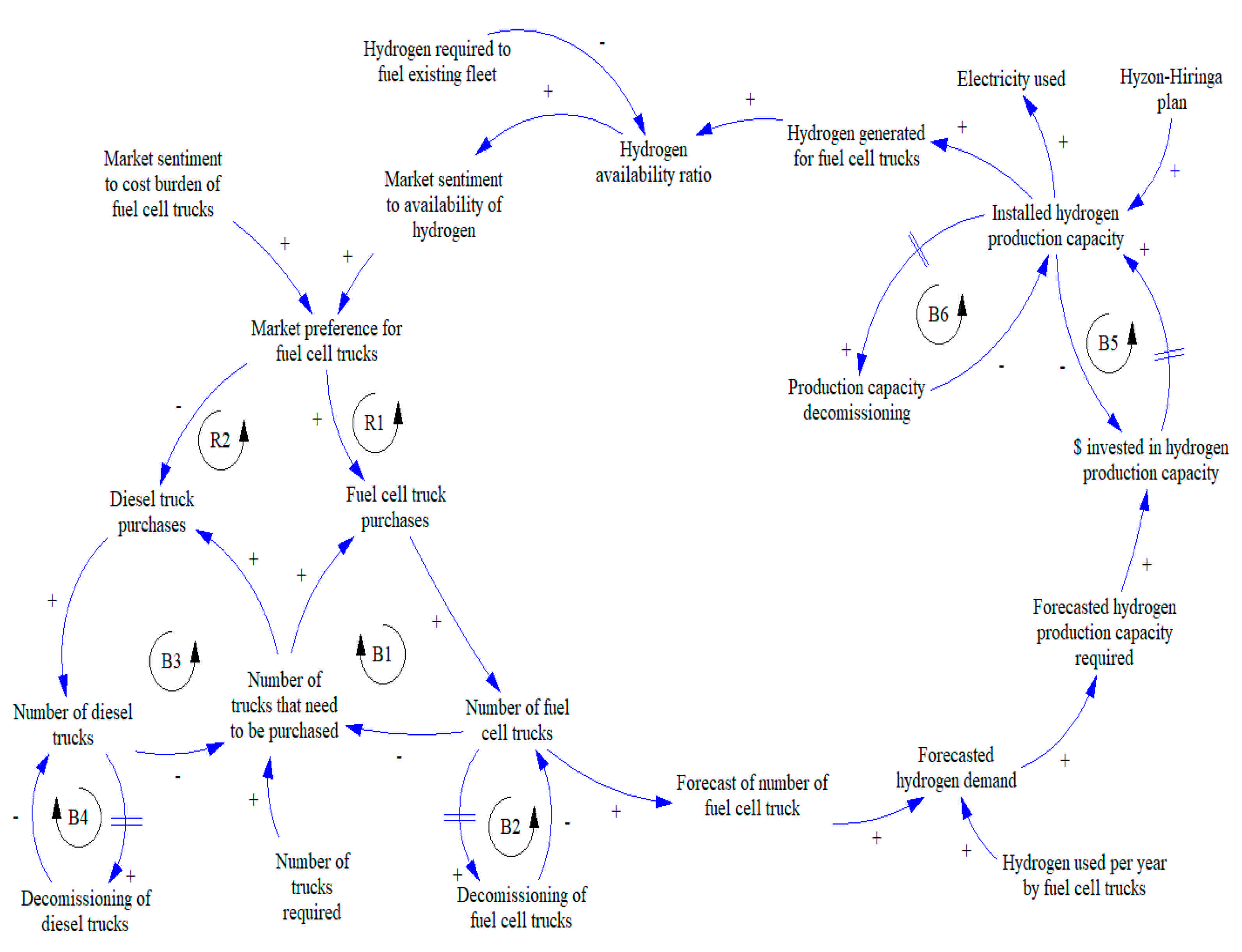
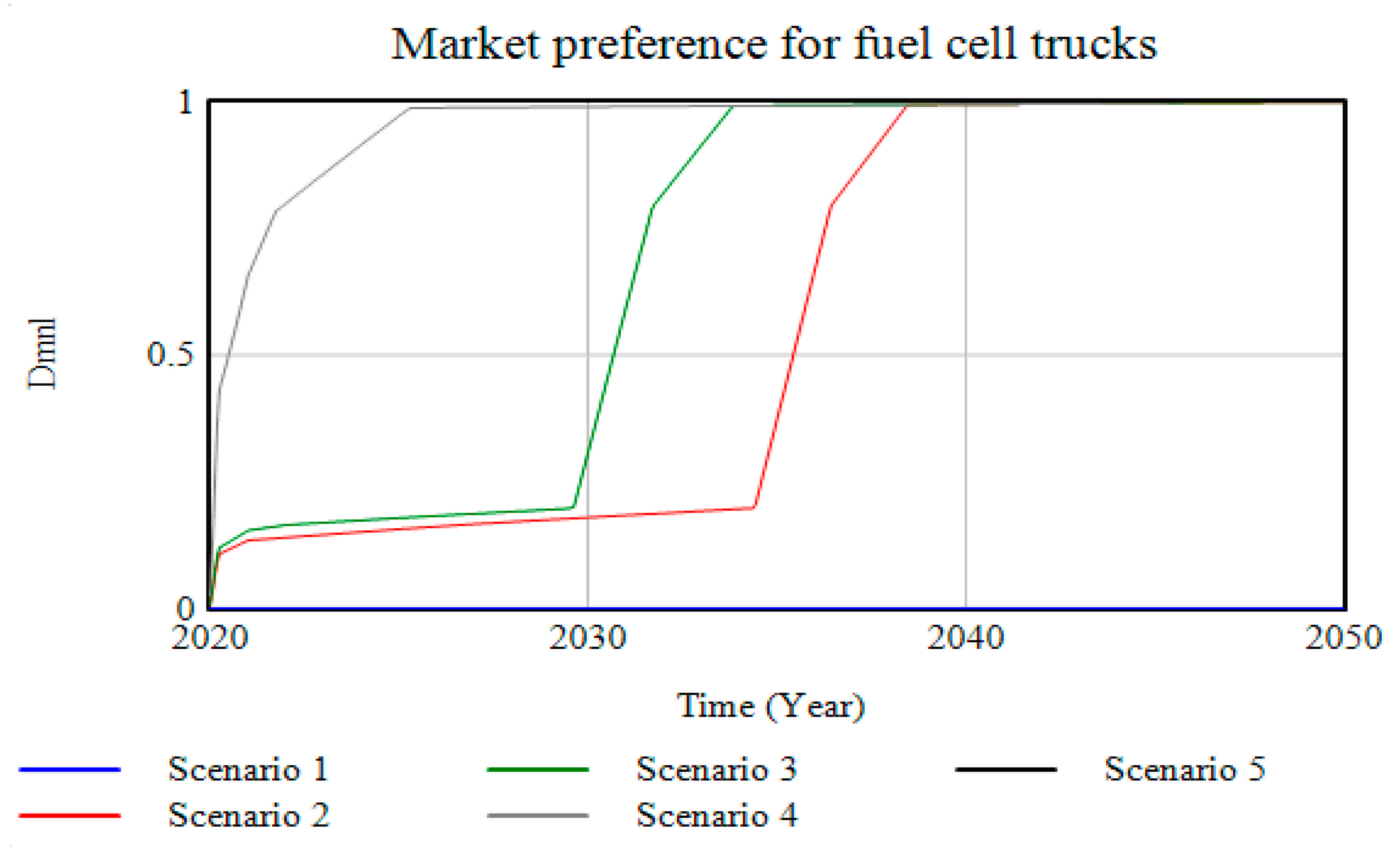
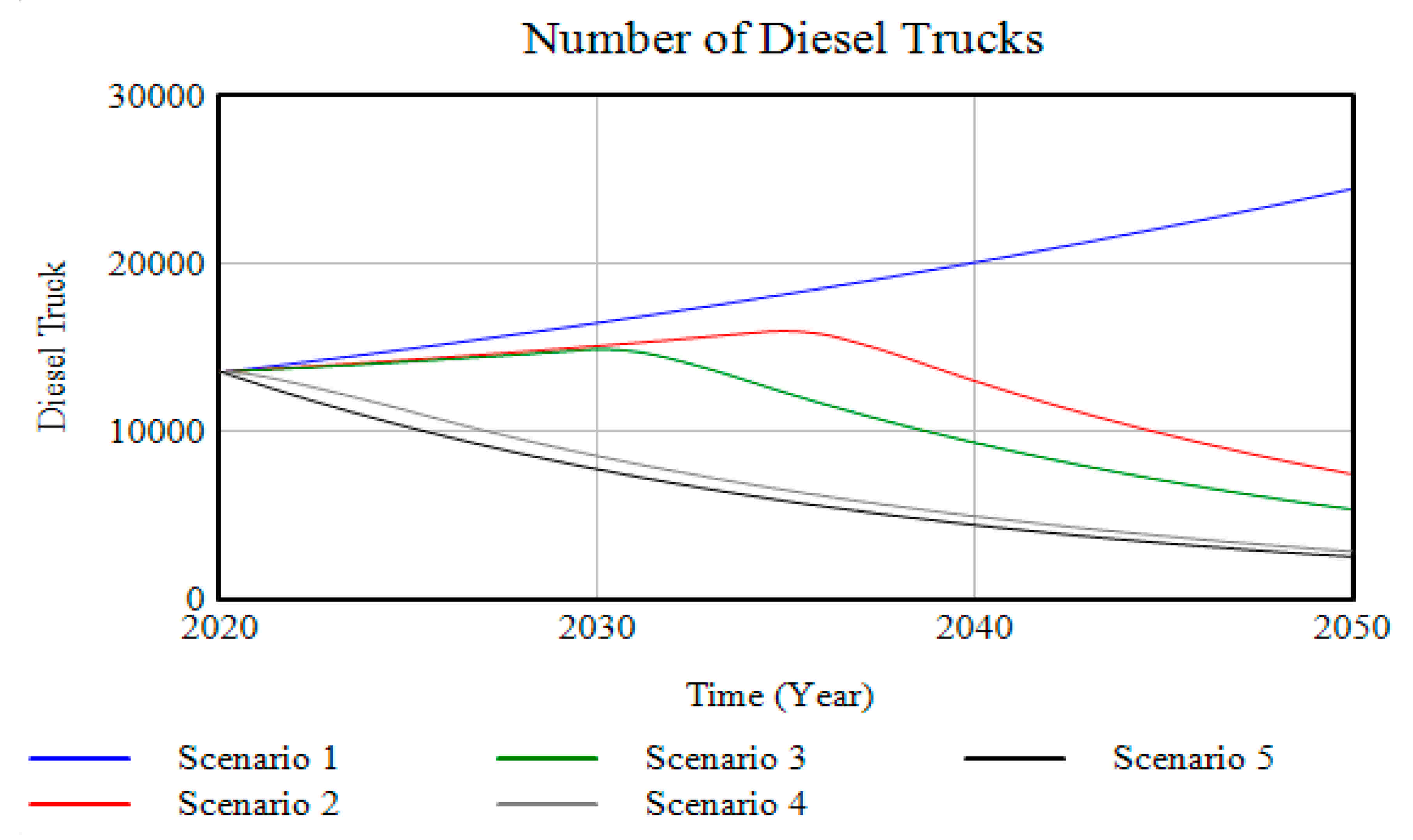
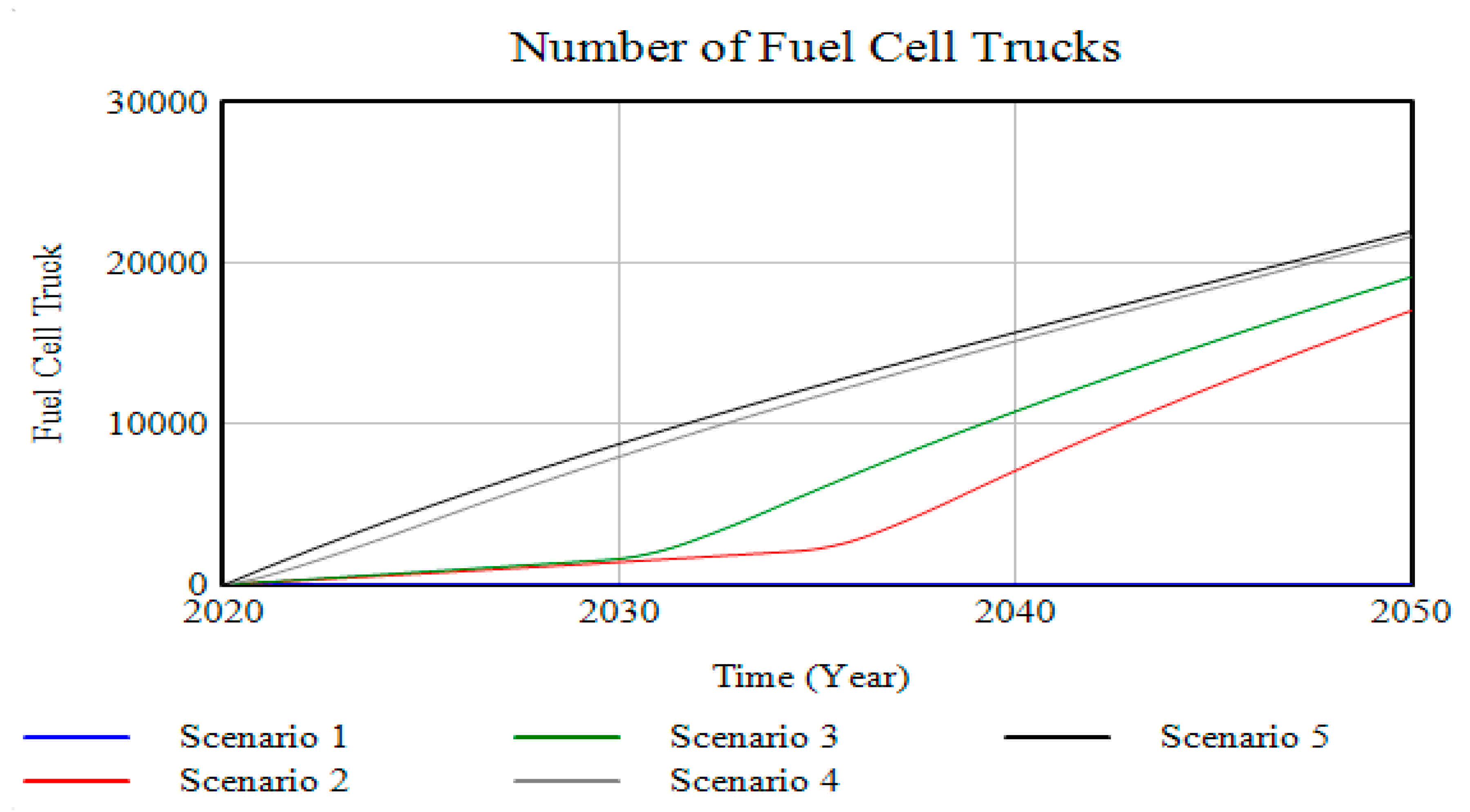
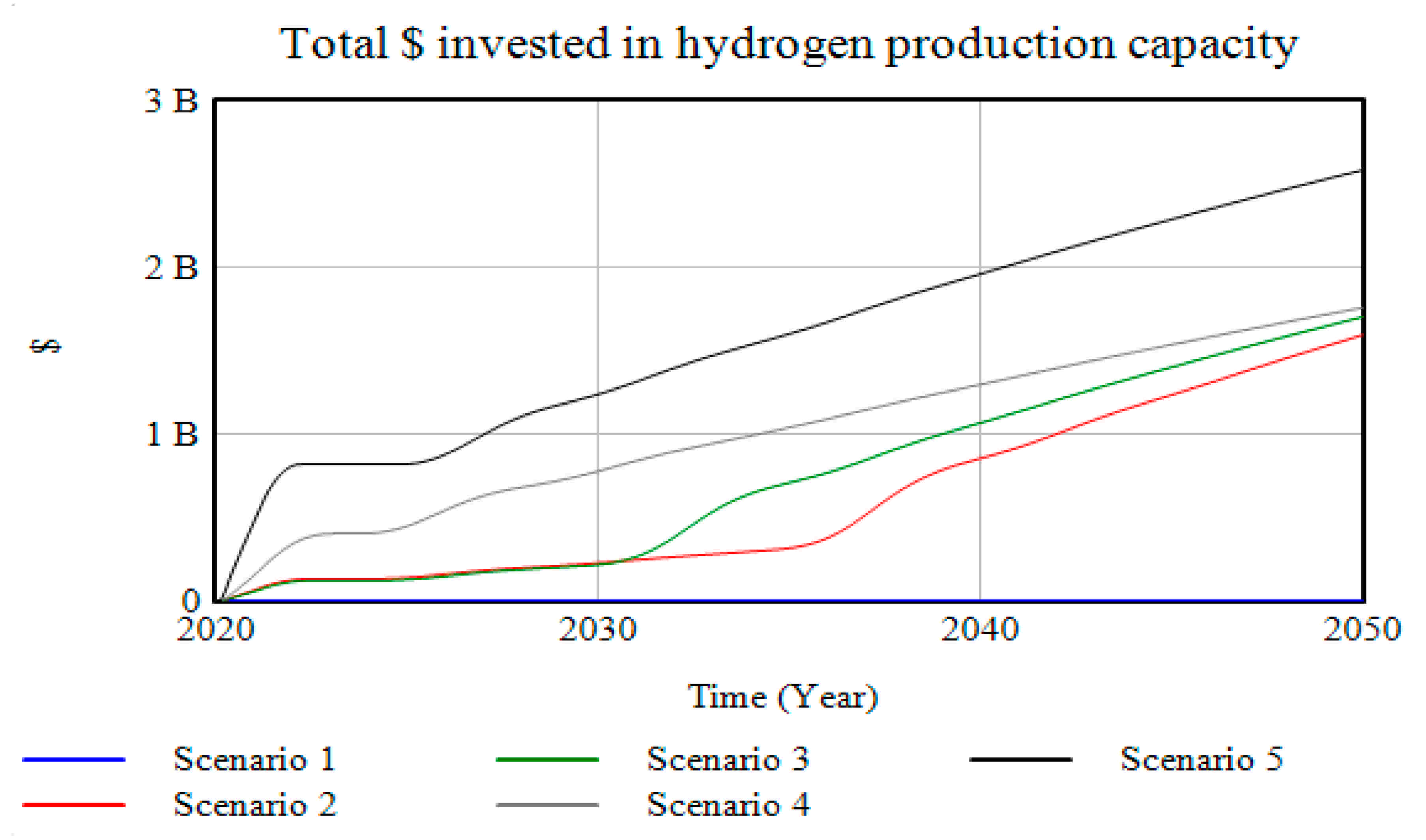
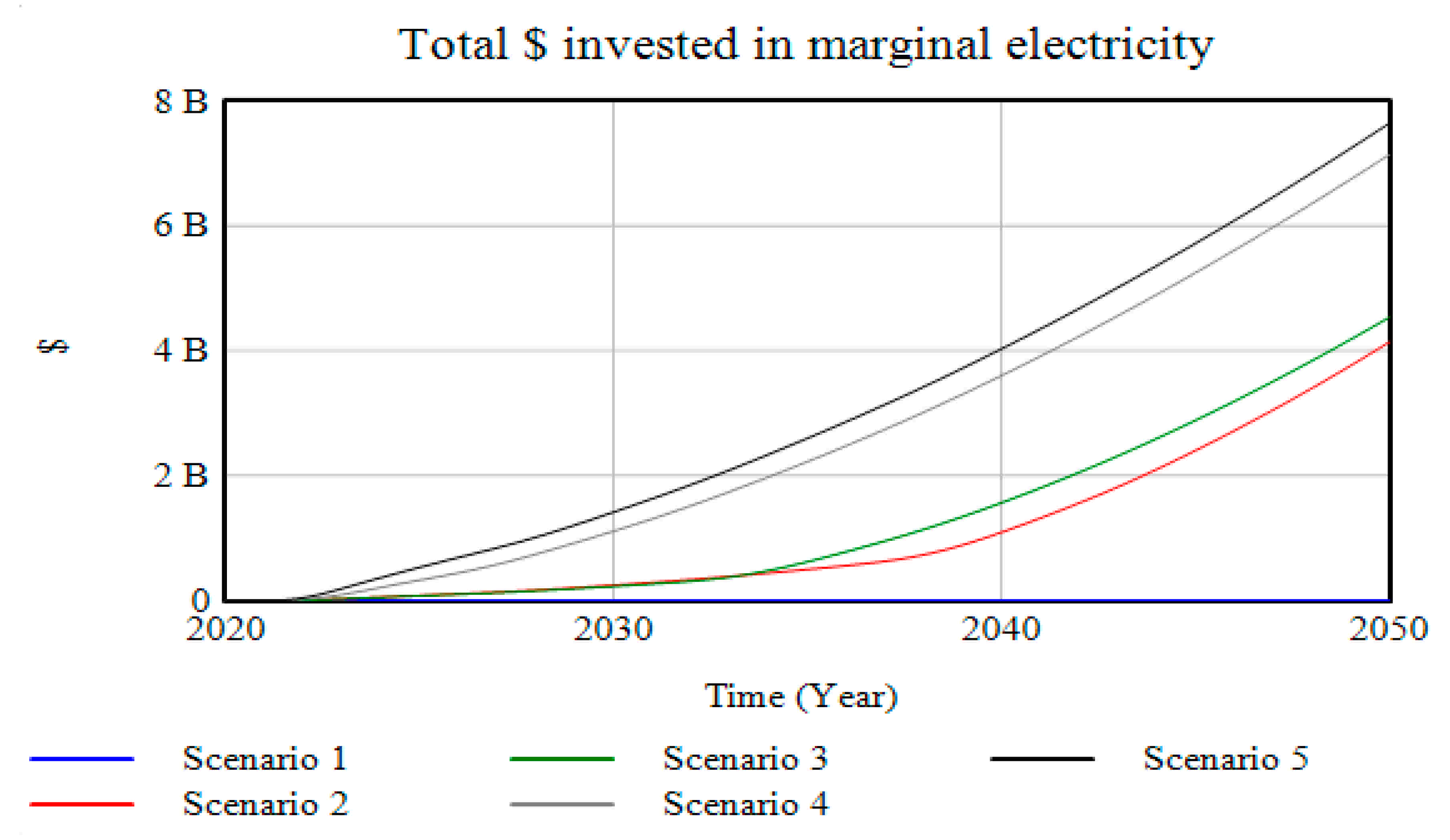
| Steps | Approach 1: Modelling Energy Technologies Such as Hydrogen [45] | Approach 2: Systems Thinking and Modelling Methodology [46] | Approach 3: Systems Thinking and Modelling for a Complex World [49] | Approach 4: Generic Stages of SDM [48] |
|---|---|---|---|---|
| Step 1 | Describe the purpose of the study | Problem structuring | Problem articulation | Conceptualization |
| Step 2 | Define the scope so that the purpose can be achieved satisfactorily and with sufficient accuracy | Causal loop modelling | Formulation of dynamic hypothesis | Formulation |
| Step 3 | Build the simplest model that can accurately represent all the features and interactions of the system defined in the scope | Dynamic modelling | Formulation of simulation model | Testing |
| Step 4 | Provide assumptions and limitations | Scenario planning and modelling | Testing | Implementation |
| Step 5 | Discuss results considering assumptions, limitations, and model imperfection | Implementation and learning lab | Policy design and evaluation |
| Parameter | Scenario 1 | Scenario 2 | Scenario 3 | Scenario 4 | Scenario 5 |
|---|---|---|---|---|---|
| Market preference for fuel cell trucks in 2050 | 0 | 1 | 1 | 1 | 1 |
| Number of diesel trucks in 2050 | 24,464 | 7437 | 5336 | 2830 | 2508 |
| Number of hydrogen fuel cell trucks in 2050 | 0 | 17,026 | 19,128 | 21,634 | 21,956 |
| Annual hydrogen generation in 2050 (MILLIONS OF KG) | 0 | 82.17 | 90.05 | 100.40 | 101.73 |
| Total hydrogen generated by 2050 (MILLIONS OF KG) | 0 | 884.9 | 1124.9 | 1751.5 | 1868.1 |
| Marginal electricity required in 2050 (GWh) | 0 | 4930.49 | 4628.66 | 5160.94 | 5228.9 |
| Total $ invested in production capacity by 2050 (BILLIONS OF DOLLARS) | 0 | 1.594 | 1.702 | 1.758 | 2.583 |
| Total $ invested in marginal electricity by 2050 (BILLIONS OF DOLLARS) | 0 | 4.141 | 4.538 | 7.147 | 7.648 |
Publisher’s Note: MDPI stays neutral with regard to jurisdictional claims in published maps and institutional affiliations. |
© 2021 by the authors. Licensee MDPI, Basel, Switzerland. This article is an open access article distributed under the terms and conditions of the Creative Commons Attribution (CC BY) license (http://creativecommons.org/licenses/by/4.0/).
Share and Cite
Kotze, R.; Brent, A.C.; Musango, J.; de Kock, I.; Malczynski, L.A. Investigating the Investments Required to Transition New Zealand’s Heavy-Duty Vehicles to Hydrogen. Energies 2021, 14, 1646. https://doi.org/10.3390/en14061646
Kotze R, Brent AC, Musango J, de Kock I, Malczynski LA. Investigating the Investments Required to Transition New Zealand’s Heavy-Duty Vehicles to Hydrogen. Energies. 2021; 14(6):1646. https://doi.org/10.3390/en14061646
Chicago/Turabian StyleKotze, Rick, Alan C. Brent, Josephine Musango, Imke de Kock, and Leonard A. Malczynski. 2021. "Investigating the Investments Required to Transition New Zealand’s Heavy-Duty Vehicles to Hydrogen" Energies 14, no. 6: 1646. https://doi.org/10.3390/en14061646
APA StyleKotze, R., Brent, A. C., Musango, J., de Kock, I., & Malczynski, L. A. (2021). Investigating the Investments Required to Transition New Zealand’s Heavy-Duty Vehicles to Hydrogen. Energies, 14(6), 1646. https://doi.org/10.3390/en14061646







